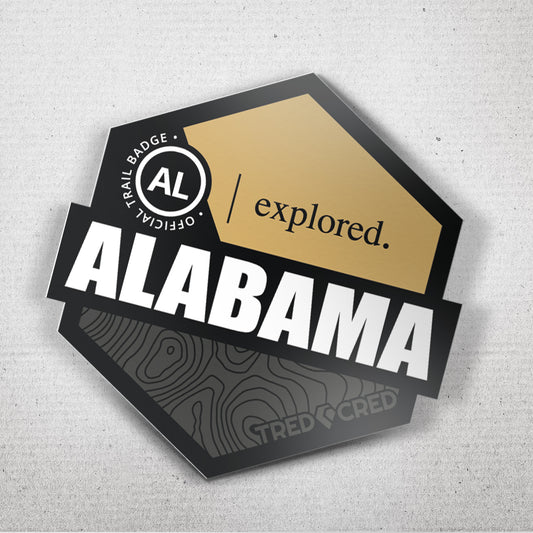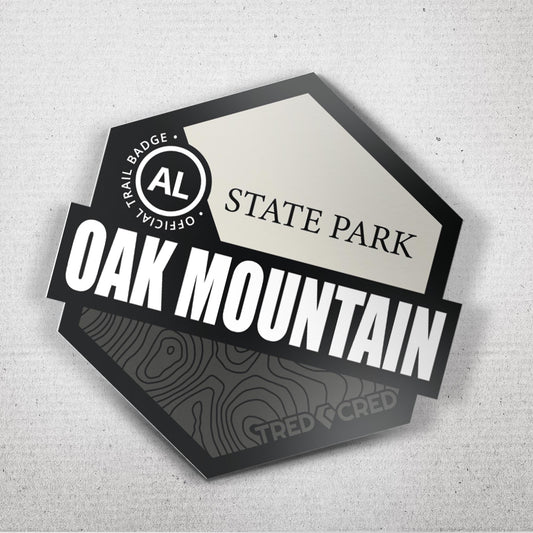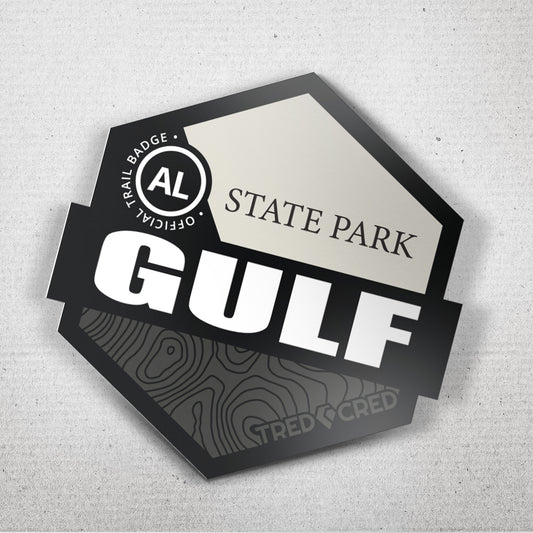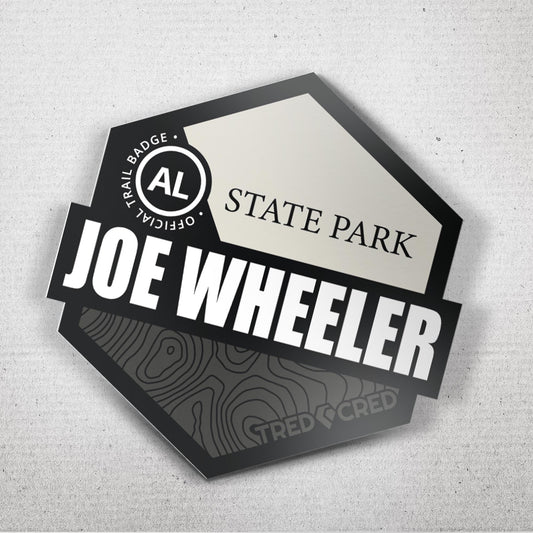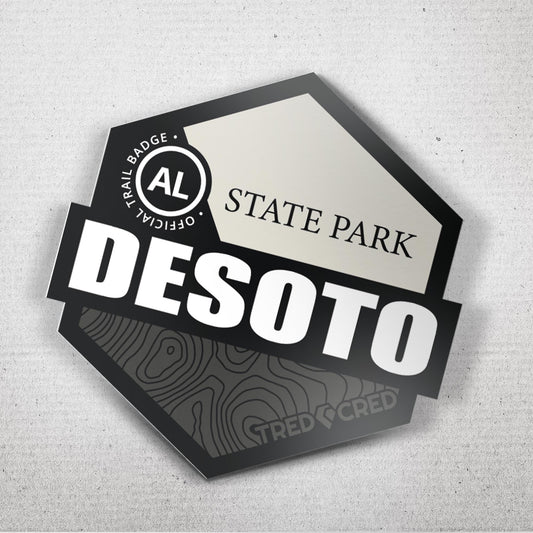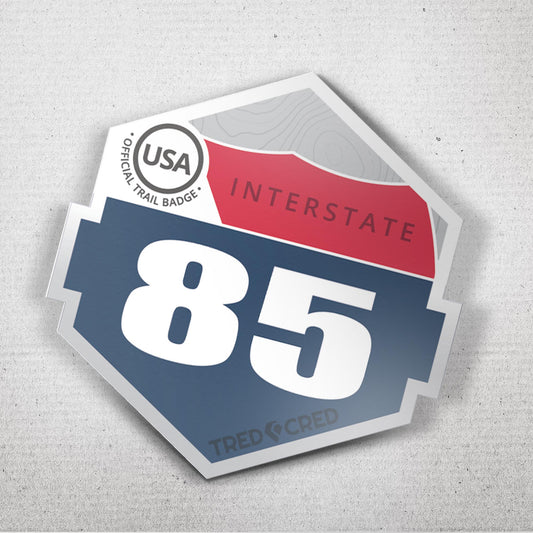Epic 4x4 Offroading Trails near Sylacauga in Talladega National Forest
Share
The Call to the Open Road
Forget the asphalt oval. When we talk about Talladega, the tribe knows we mean the towering pines and rocky spine of the National Forest. This isn't a high-speed dash; it’s a multi-day expedition that tests your rig, rewards your senses, and truly delivers freedom. The wind through the trees, the crunch of gravel under your durable tires, and the deep satisfaction of knowing your rig is your shelter—that’s the Talladega we live for.
If you’ve got a built 4x4 and a desire to explore beyond the day-trip spots, the legendary Skyway Motorway route near Sylacauga, Alabama, is calling. This is the heart of Alabama Overlanding, offering a perfect blend of high-speed scenic travel and technical 4x4 sections that demand respect. You'll gain elevation, lose cell service, and find a connection to the Appalachian foothills that pavement simply can't offer.
Get ready to load up, air down, and tackle the best overlanding trails Alabama has to offer. This is where your journey begins, and Tred Cred is here to be your guide.
The Skyway Motorway Overview: FSR 600-1 & 600-2
The Skyway Motorway—comprised primarily of Forest Service Roads 600-1 and 600-2—is the backbone of your adventure. Stretching roughly 27 to 30 miles along the ridge of Horn Mountain, this route is less like a single trail and more like a handshake between the scenic and the serious. Your journey starts near Sylacauga and winds north, but don't let the "Forest Service Road" designation fool you into complacency.
FSR 600-1: The Scenic Gateway
This is your welcome mat. FSR 600-1 is typically the more maintained section, often featuring packed dirt and smooth gravel. In dry conditions, it's a pleasant, high-clearance 4x4 or even rugged AWD route. It’s perfect for settling into the drive, checking your gauges, and letting the kids spot the wildlife. This section is where you get to truly appreciate the sheer scale of the Talladega National Forest.
I remember a run where we hit 600-1 on a crisp fall morning. The sun slanted through the dense forest canopy, turning the dust swirling behind us into a golden curtain. It was pure bliss—the kind of drive where you feel truly connected to the landscape. It's a Class 2-3 trail, ideal for airing down your tires slightly for comfort and getting your head right for the days ahead. Think of 600-1 as the warm-up lap before the real race begins.
FSR 600-2: The True 4x4 Challenge
As you transition to FSR 600-2, the atmosphere changes instantly. The road is less maintained, the trees close in, and the true Appalachian bedrock starts to show its teeth. This section is a proper 4x4 offroading trail that will test your suspension, your ground clearance, and your line selection.
Here, the challenges come courtesy of water runoff. Because this trail runs along the ridge-line, heavy rain quickly turns drainage areas into deep washout ruts and miniature lakes. These ruts are often unavoidable, and they are usually littered with sharp, embedded rocks and boulders. You’ll be in 4-Lo, working your axles, and relying on the resilient build of your rig.
Is a stock 4x4 truly safe on 600-2? Honestly, no. While you can often crawl around the nastiest obstacles, the constant, unexpected nature of the ruts means a stock rig with low clearance is almost guaranteed to take body damage or bottom out a differential. A modest lift, good rock sliders, and quality all-terrain tires are minimum requirements here. This trail reminds you that Overlanding isn't just scenic driving; it’s self-sufficient, technical exploration.
Gear Up for the Long Haul: The Overlanding Essentials
Overlanding is defined by self-reliance. When you venture deep into the Talladega National Forest, you are taking your basecamp with you. Unlike a day at a closed park, getting stuck or running out of a crucial resource here can put you in a serious bind. Your gear isn't just comfort; it's quality insurance.
The Durable Basecamp
Beyond the typical recovery strap and shovel, the multi-day nature of the Skyway Motorway demands a well-thought-out mobile basecamp. Your rig is your home, and it needs to be durable and smart:
- Navigation & Communication: Cell signal is practically non-existent along the ridgeline. A dedicated off-road GPS (like Gaia GPS or OnX Offroad with downloaded maps) is non-negotiable. For communication with your tribe or in emergencies, a GMRS radio is excellent for vehicle-to-vehicle, but a satellite communicator (like a Garmin inReach) is the ultimate lifeline.
- Water & Food: Plan for more than you need. A good water filtration system or a large, dedicated water tank is far better than relying on creek water. Your fridge/freezer setup should be able to handle the high Alabama humidity and keep food fresh for the duration of the trip.
- Fuel Range: While the route is only about 30 miles one way, you are driving deep into the forest. Always account for miles spent scouting camp spots, potential detours, and the lower MPG you get running in 4-Lo. A small, roof-mounted gas can or tank for extra fuel is smart insurance and a mark of an experienced adventurer.
I learned the fuel lesson the hard way. Early in my journey, I was running low after a particularly long day of scouting camp spots, and I had to choose between a scenic lookout and the direct route out. My partner, who had packed a small, quality 5-gallon reserve can, saved the day. We were able to send it to the overlook, enjoy the sunset, and still make it to the nearest gas station the next morning. It taught me that real freedom comes from proper preparation.
Finding Freedom: Dispersed Camping & Vistas
The biggest reward of Overlanding the Skyway Motorway is the epic views and the feeling of genuine solitude that comes with dispersed camping.
The Perfect Ridge-line Camp Spot
The Talladega National Forest, like many public lands, allows dispersed camping—camping outside of a developed campground—unless otherwise marked. This is where you truly earn your spot. Along the higher ridges of FSR 600-1 and 600-2, there are several wide, established clearings, often near the power line cuts, that offer panoramic views of the Appalachian foothills. These are your targets.
The Power Line Cut is a famous point on the route. It’s a wide swath of cleared land that runs straight over the mountain, offering a view that stretches for miles. Setting up camp here means you’re on top of the world. Imagine watching the sun rise, casting long shadows over the densely forested valleys below, all from your self-contained basecamp.
Community-Focused Responsibility
With great freedom comes great responsibility. As members of the off-road family, we must be stewards of the land. This is particularly crucial in dispersed camping areas:
- Leave No Trace (LNT): Pack out everything you pack in. This includes food scraps, wrappers, and even toilet paper (if not properly buried far from water sources).
- Fire Safety: Check the fire restrictions before you go. If you do have a fire, keep it small, contained in an existing fire ring if possible, and dead-out cold before you leave. The resilience of the forest depends on your caution.
- Tread Lightly: Always stay on the marked Forest Service Roads. The rule is simple: if it’s not a marked road on the MVUM map, don't drive on it. We need to protect these public lands to ensure they remain open for the next generation of adventurers.
Cementing the Adventure: Rep Your Journey
When you roll off the Skyway Motorway near Sylacauga, your rig isn't just a vehicle; it's a veteran of an epic journey. It's coated in the iron-rich red dirt of the Talladega hills, a beautiful patina that tells a better story than any showroom shine. This is the moment to cement the memory.
The Tred Cred Talladega trail patch or sticker is more than just vinyl or thread—it’s a badge of honor. It represents the hours spent meticulously packing, the focus required to navigate the ruts of 600-2, and the sheer grit it took to keep going when the trail got rough. It’s your handshake with the tribe that acknowledges you successfully completed a true overlanding expedition.
Proudly rep your rig by applying that patch. Let it serve as a subtle nod to other wheelers that you not only made the trip but appreciated the quality of the experience. You are now part of the family that knows the real beauty of Talladega lies not on the track, but on the trails.
Go Conquer the Journey!
Explore the map, double-check your rig's fluids, and then send it! The epic journey through the Talladega National Forest is a reminder that the best adventures are earned, not given. It’s a route that tests your durable build and rewards your commitment to self-reliance and freedom.
Go find that perfect ridge-line camp spot, prove the quality of your build on FSR 600-2, and bring back a story worth sharing. Gear up, hit the trail, and rep your adventure! We’ll be waiting for your trip report, tribe.
Community Challenge: What is your favorite 'must-pack' item for a 3-day overlanding trip, and why? Let us know in the comments—we're always looking to optimize our journey!


